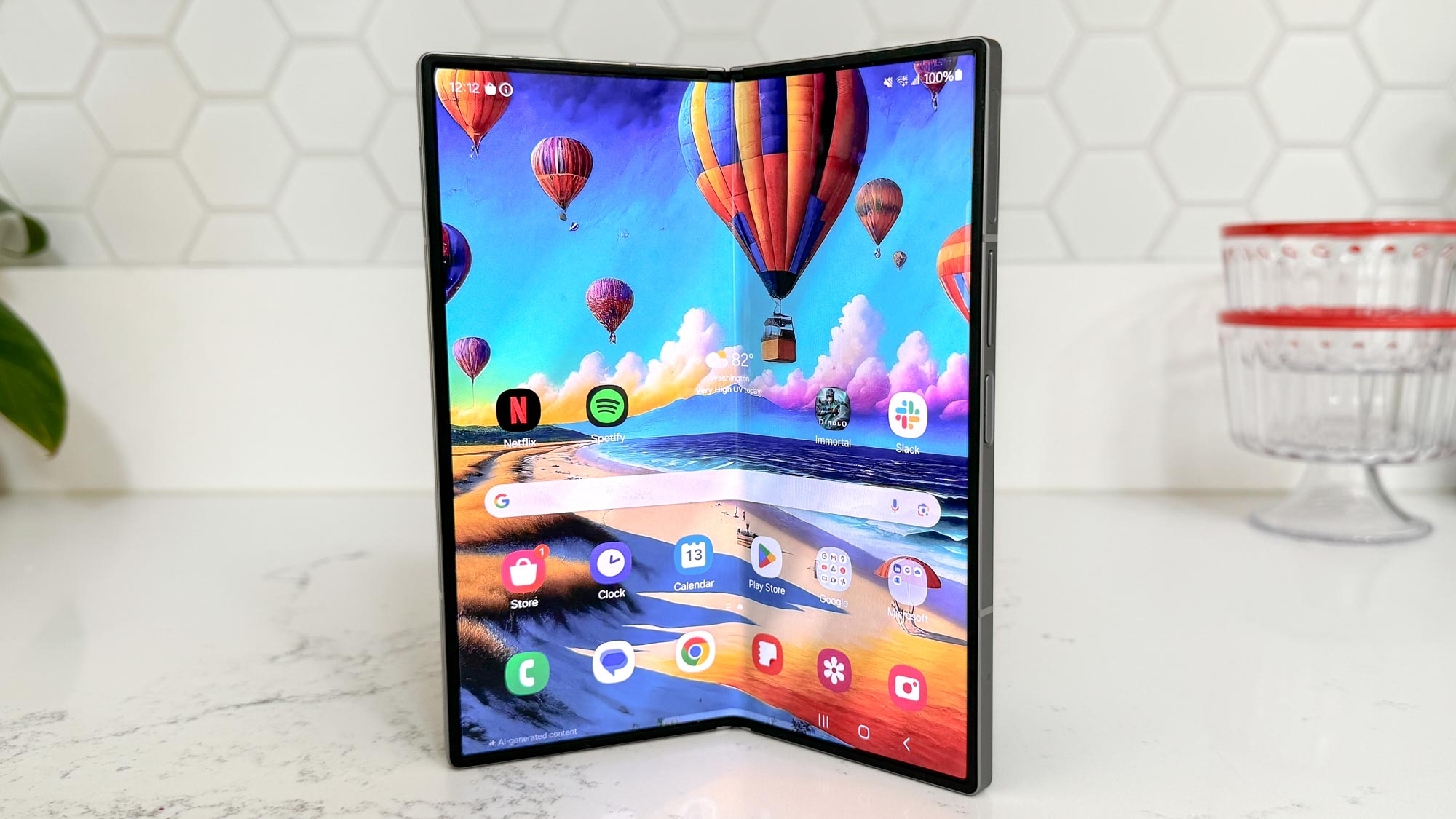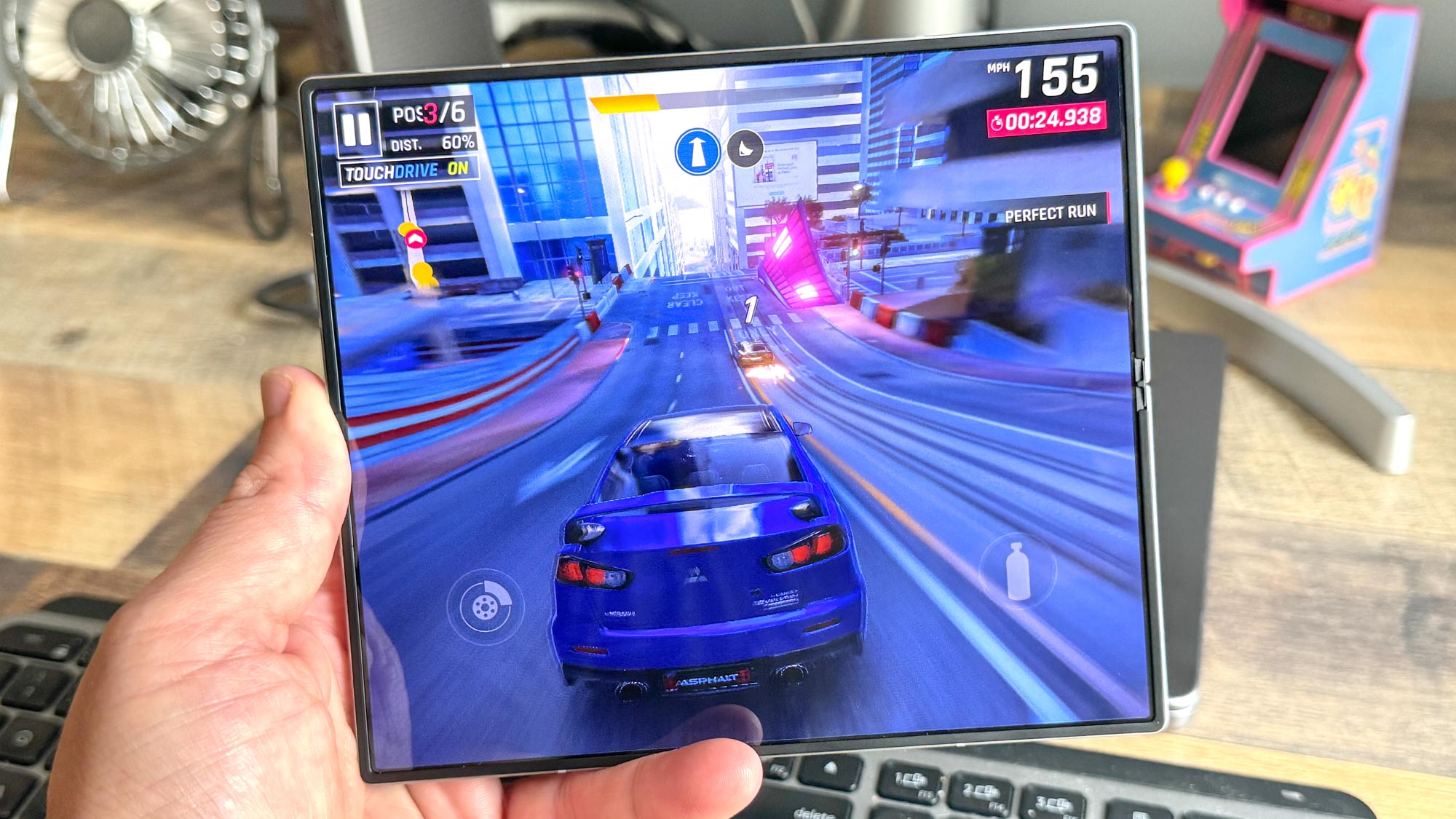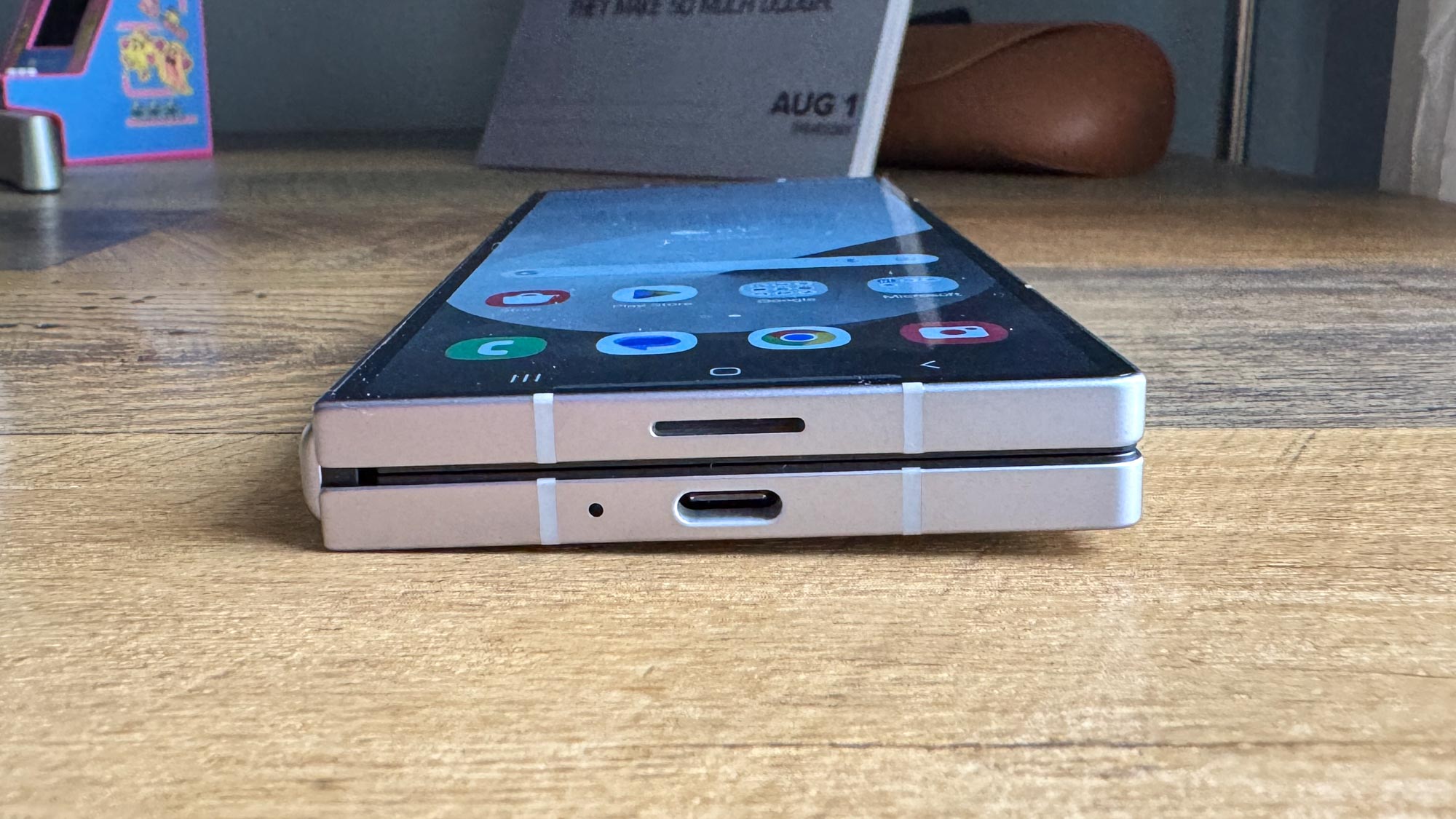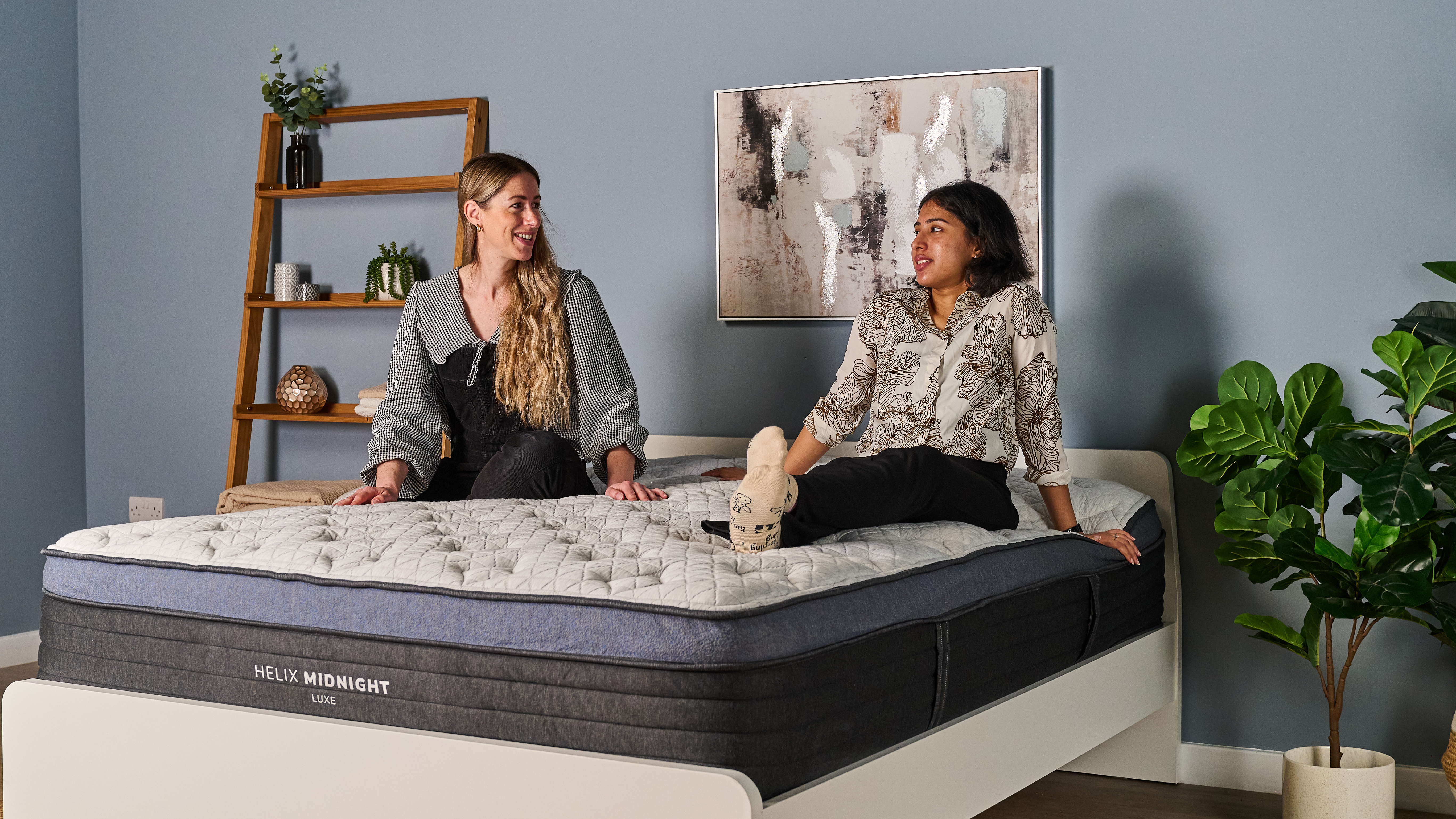The Samsung Galaxy Z Fold 7 could be the world's thinnest foldable — there's just one problem
Don't forget about battery life

Foldable phones may be engineering marvels, but they can't seem to shake a few inherent problems that I believe are keeping them from wider acceptance. They cost a lot, for starters, and despite some support from key app makers, there are still far too many apps that aren't optimized for the expanded screens. And even though phone makers have put a lot of effort into improving hinge mechanisms, concerns about durability linger on.
All of those would be reason enough to steer clear of foldable phones. But there's one thing keeping me from making a foldable my go-to mobile device — I'm just not impressed with the battery life that foldable phones deliver.
Certainly, I can understand the constraints that phone makers are working under when they build a foldable phone. If you want to keep the device portable, there's only so much internal space you have available, which puts limits on how big a battery you can use. With both a cover display and a larger interior panel, that's two screens the battery has to keep powered up. It's not a recipe for a phone that lasts a long time on a charge.
Still, it's something that foldable phone makers are going to have to address if they ever want these devices to escape the niche they currently occupy. And from the sound of two rumors about the upcoming Galaxy Z Fold 7 this week, it sounds as if Samsung doesn't agree that's a priority. And considering that Samsung has been pushing foldables more than any other phone maker, that's a little bit concerning.
Battery life: How current foldables perform

Every phone we review at Tom's Guide goes through a battery test, where we set the screen of the device at 150 nits and then have it surf the web over cellular. We time how long it takes for the phone to run out of power, and after running that test a few times, we come up with an idea of what its average battery life is like.
On that test, the average smartphone these days posts a time of between 10 and 10.5 hours. The very best phones for battery life can hold out for 15 hours or more. It's safe to say most foldables don't come anywhere near the higher end of that range.
Phone | Battery size | Average attery life (Hrs:Mins) |
Samsung Galaxy Z Fold 6 | 4,400 mAh | 10:45 |
Samsung Galaxy Z Flip 6 | 4,000 mAh | 10:12 |
OnePlus Open | 4,805 mAh | 11:31 |
Google Pixel 9 Pro Fold | 4,650 mAh | 10:32 |
Motorola Razr 2024 | 4,200 mAh | 13:57 |
Motorola Razr Plus 2024 | 4,000 mAh | 14:10 |
There are some exceptions. The 2024 versions of the Motorola Razr and Motorola Razr Plus both averaged around 14 hours on our test, give or take a few minutes in either direction. And given Motorola's reputation for delivering long-lasting phones of every size and design, there's every reason to believe that the 2025 versions of the foldable flip phone, led by the Motorola Razr Ultra 2025, will set the pace again.
Get instant access to breaking news, the hottest reviews, great deals and helpful tips.
Otherwise, the times we've recorded are pretty close to average for the smartphone category as a whole — the difference being that these phones all cost more than $1,000. And Samsung's latest foldable phones are notable for being bunched toward the back of the pack.
I want to be fair to foldable phones as a whole and note that these numbers are trending in the right direction, even if the results don't get them anywhere near our best phone battery life list. Foldable battery times used to fall well below the average result for smartphones, so we're seeing some progress on that front. But when you compare these times to what flagships with conventional designs are capable of, it really illustrates how battery life is a foldable phone shortcoming.
The Galaxy S25 Ultra and iPhone 16 Pro Max both have big screens, even if they don't fold out to cover as much space as, say, the Galaxy Fold 6. But the Ultra and iPhone also last a long time on a charge — more than 17 hours each. And while the respective $1,299 and $1,199 starting prices aren't cheap by any stretch of the imagination, they're hundreds of dollars less than the $1,899 you'd have to pay for the latest Galaxy Fold.
Samsung Galaxy Z Fold 7 battery rumors

So how is Samsung responding to this challenge with the Galaxy Z Fold 7, which is rumored to be arriving later this summer? If you go by rumors about the phone's specs, Samsung's not really doing much of anything.
Recent leaks based on regulatory filings for the Galaxy Z Fold 7 indicate the phone will have the same 4,000 mAh battery as its predecessor. While you'd expect the chipset powering the new phone to be more efficient than its predecessor — especially since the Galaxy Z Fold 7 is in line to get the very efficient Snapdragon 8 Elite silicon — that doesn't we're likely to see big gains later this year when we put Samsung's new foldable to the test.
(If you want more encouraging news, those same listings indicate an increase in the Galaxy Z Flip 7's battery, which is in line to get a 4,300 mAh power pack. That's good since the Galaxy Z Flip 6 badly lags behind the Razr foldables when it comes to lasting a long time on a charge.)
Other Galaxy Z Fold 7 rumors reveal why Samsung may be unable to give the new phone much of a boost in battery size. That's because the updated Fold is in line to become much thinner than its predecessor.
Specifically, a tip from well-regarded leaker Ice Universe claims that the Galaxy Z Fold 7 will be 3.9mm thin when it's open and 8.9mm thin when it's folded shut. That compares to respective measurements of 5.6mm and 12.6mm for the Galaxy Z Fold 6.
I can understand the desire to make foldable phones thinner. The calling card for foldables is the ability to carry around a device with a tablet-sized screen in your pocket, and slimming down that device makes slipping it into your pocket that much easier.
Still, what do I care if it's easier to tote around my foldable phone, but I still have to keep a charger with me at all times and hope that there's a free outlet or charging pad wherever I'm headed to? Every design decision with a phone involves trade-offs, but Samsung seems to willing to sacrifice battery life when that's one of the big reasons why people might be reluctant to embrace foldabes.
Galaxy Z Fold outlook
As with any time we're dealing with rumors about unreleased phones, the reality of the Galaxy Z Fold 7 could turn out to be quite different from the picture that the latest rumors are painting. And like I said earlier, maybe the Snapdragon 8 Elite set to power the new foldable will make a world of difference when it comes to power management — the chipset certainly as for other phones released this year.
But as much as anything, I really value battery life in a phone. I want a device where I don't have to think about charging it from the moment i get up until the moment I go to bed. And if I forget to plug my device in overnight, it's not the end of the world, since there's still plenty of juice left in it to get me started the next day.
Foldable phones don't offer that right now. And until they start, I can't take them seriously as an option for the device I use on a daily basis.
More from Tom's Guide
- Samsung Galaxy S25 Edge debuts Monday — 3 things we know and 2 we still need to find out
- Samsung Galaxy Z Flip 7 vs. Motorola Razr Ultra (2025): How these flip phones could compare
- iPhone Fold 'creaseless' display could make it a day 1 purchase — there's just one problem
Philip Michaels is a Managing Editor at Tom's Guide. He's been covering personal technology since 1999 and was in the building when Steve Jobs showed off the iPhone for the first time. He's been evaluating smartphones since that first iPhone debuted in 2007, and he's been following phone carriers and smartphone plans since 2015. He has strong opinions about Apple, the Oakland Athletics, old movies and proper butchery techniques. Follow him at @PhilipMichaels.
You must confirm your public display name before commenting
Please logout and then login again, you will then be prompted to enter your display name.

